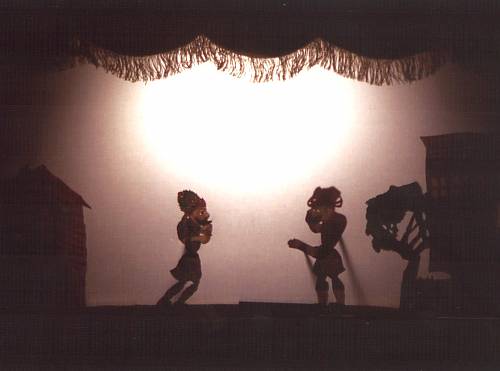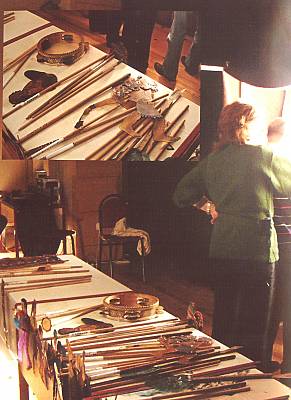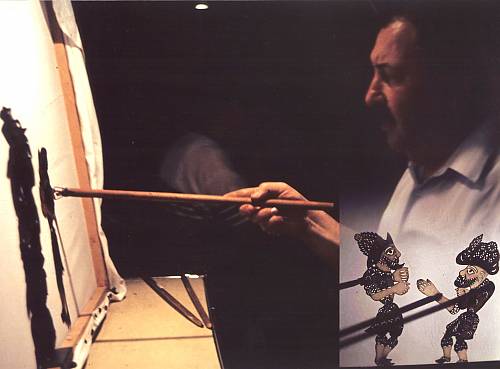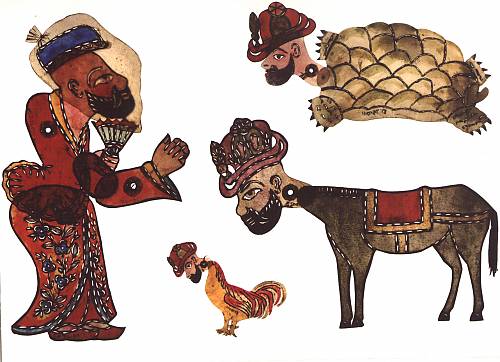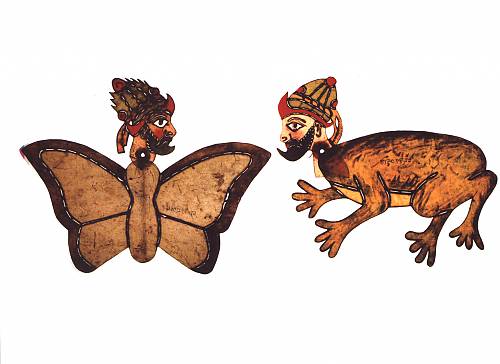Karagöz
Inscribed in 2009 (4.COM) on the Representative List of the Intangible Cultural Heritage of Humanity

Karagöz is a form of shadow theatre in Turkey in which figures known as tasvirs made of camel or ox hide in the shape of people or things are held on rods in front of a light source to cast their shadows onto a cotton screen. A play begins with the projection of an introductory figure to set the scene and suggest the themes of the drama, before it vanishes to the shrill sound of a whistle, giving way to a main performance that may incorporate singing, tambourine music, poetry, myth, tongue-twisters and riddles. The usually comic stories feature the main characters Karagöz and Hacivat and a host of others, including a cabaret chanteuse called Kantocu and an illusionist-acrobat named Hokkabaz, and abound in puns and imitations of regional accents. The puppets are manipulated by one lead artist, the Hayali, who may have one or more apprentice-assistants who are learning the craft by helping to create the tasvirs and accompanying the action with music. Once played widely at coffeehouses, gardens, and public squares, especially during the holy month of Ramazan, as well as during circumcision feasts, Karagöz is found today mostly in performance halls, schools and malls in larger cities where it still draws audiences. The traditional theatre strengthens a sense of cultural identity while bringing people closer together through entertainment.
